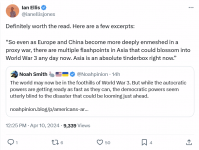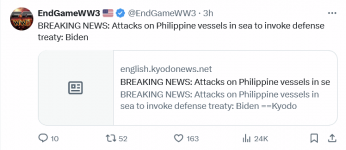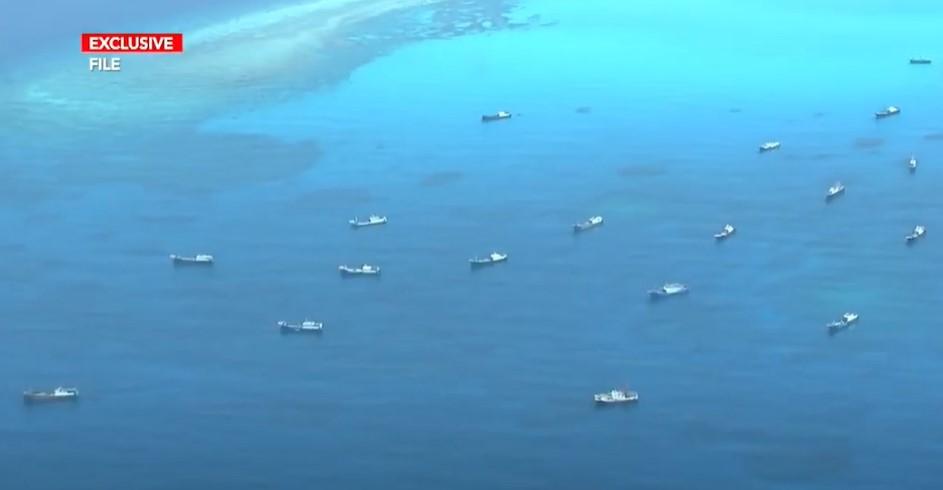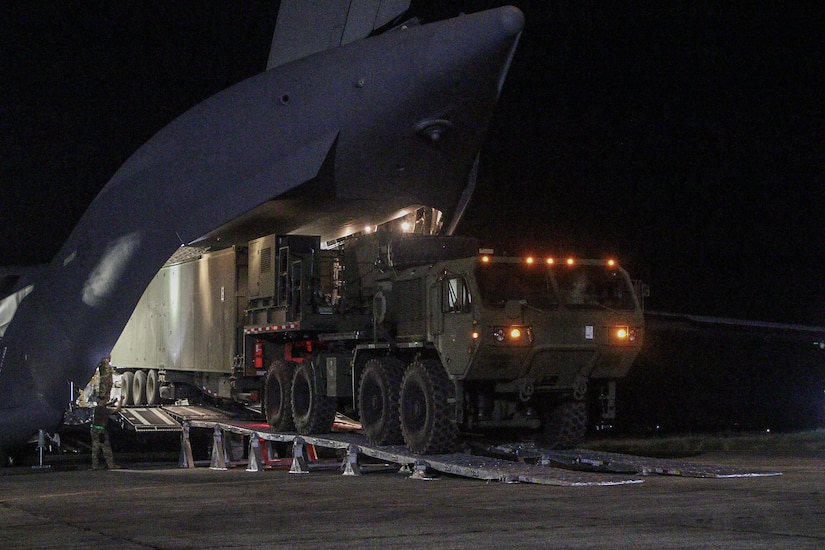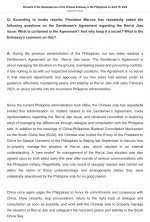Continued........
4/ A new Core Group will move to protect its own interests and new domination of power. The new Core Group will attempt to ensure nKorean sovereignty through international efforts at the United Nations and other world bodies. Because they view it as a method of cementing their new-found control, the new Core Group will seek immediate humanitarian relief for the nKorean populace and will seek assistance in improving the nKorean economic infrastructure.
Variables
a. Fracture is preventable through unprecedented levels of suppression or the implementation of the war directive. During the latter, Kim Chong-il and the Core Group will perceive resistance energies at all levels will be diverted to nationalistic motivations targeting the concept of “saving the fatherland.” Possible.
b. Massive foreign economic assistance that perpetuates Phase II - Phase III transition. This is unlikely.
c. Major power intervention. Only China could force substantial changes in nKorea’s policies. Unlikely, too costly for China in terms of resource allocation.
d. Independent Republic of Korea intervention during the fracture or realignment phase. Only likely during full scale civil war in nKorea after central military control has disintegrated.
e. Assassination of Kim Chong-il. Due to the pervasive and overlapping security systems, this is difficult (not impossible). This would require assistance from the inner circles of the Core Group. Possible only during fracture phase when internal security systems compete for power rather than influence. In such abnormal circumstances, one cannot predict the actions of a “Mr. X”, who could be a member of the Core Group or an internal security system.
f. Coup d’état (one of two core components of fracture phase, the other being polarization within the Core Group). Remote possibility. No recorded incidents of successful coups in communist systems due to intense organizational aspects of political control.
g. Flight from country by Kim Chong-il. Possible. However, Kim is likely to consider the use of war to maintain control of his regime prior to flight.
h. Kim Chong-il and Core Group initiate war with the Republic of Korea because Kim and the Core Group see this as the only option for survival as fracture approaches. Indeed, Kim and the Core Group cannot wait for the fracture phase as fissures along loyalty lines may disenable full compliance with war order. Possible.
Conclusions
a. This paper discussed war as a nKorean option only in the form of a tool to suppress extreme dissent as perceived by Kim Chong-il and the Core Group.
b. For the purpose of survival, nKorean individuals and groups will employ unsanctioned methods to circumvent present administrative functions. This circumvention will lead to shadow economic systems, the detection of which will activate extreme suppression measures.
c. The execution of indiscriminate force will be perceived by Kim Chong-il and the Core Group as critical to the maintenance of the nKorean political system and the preservation of the Core Group’s lifestyle. Consequently, nKorean I/S systems will implement a two-fold approach: ruthless suppression of dissidence (real or perceived) at both the grassroots level as well as at the elite level (particularly the military).
d. Further economic decay is unavoidable. Economic collapse will begin to impact the perimeter of those organizations designed to ensure regime survivability. As this process develops, the Core Group itself will be affected by extreme reactions by Kim Chong-il and certain members of the Core Group.
e. Domestic nKorean propaganda will increasingly turn inward at domestic targets as well as blame foreign - read Republic of Korea and American - interference in nKorean domestic affairs.
f. However, though extreme and indiscriminate suppression measures may be successful in preserving the Kim Chong-il regime in the short term, continued economic collapse and prioritization, along with lack of reform, will reinitiate the cycle until the realignment phase is realized.
An annex to this paper includes political-military indicators to the seven phases of collapse.
Annex to Paper Entitled “Pattern of Collapse in North Korea”
Indicators to Seven Collapse Phases
Purpose: The purpose of this list of indicators is to provide general indicators that will be inherent to each phase. The more prevalent the incidents or group of incidents, the more advanced into the phase nKorea has progressed.
Most of these indicators can happen at any time. However, the phases of fracturing and realignment are direct, unambiguous actions and are unlikely to happen without a progression through the first five phases. Indeed, transition from phase four to phase five dramatically increases the likelihood of phases six and seven.
Assumptions
a. Isolated incidents of the type listed below do not constitute, in and of themselves, either collapse or subordinate phases. Concentration of these incidents above usual norms, as perceived by nKorean officials, is a better yardstick to gauge advancement from one stage to another.
b. No indicators related to war preparations will be included in this list. However, some of nKorean government actions to suppress internal dissidence may be similar to actions determined to be indicators for war preparations.
Phase One - Resource Depletion: nKorea has already passed through this phase at almost every level. The only areas likely not to affected by resource depletion are the personal resources of Kim Chong-il and the Core Group. Significant indicators that are already publicly evident are:
a. Consecutive years of negative growth.
b. Discontinuation of major trading agreements.
c. Foreign trading partners demand hard currency in exchange for goods and services.
d. Foreign credit denied.
e. Drastic reduction in energy acquisition due to lack of capital investment instruments.
f. Significant energy prioritization.
Phase Two - Prioritization: This transition is difficult to detect because the process by which non-capitalist nation’s economic planners determine prioritization is politically vice economically based.
a. Closure of production facilities critical to infrastructure support.
b. Adjacent collective farms with similar crops produce significantly different harvest rates.
c. Closure of all “type non-essential” production facilities such as all furniture factories, kitchen utensil factories, or any other production facilities not directly related to the military.
d. Energy blackouts to specific regions for weeks or months at a time.
e. Implementation of policies denying the use of infrastructure (transportation/mobility assets) to non-defense related operations.
f. Consolidation of public welfare facilities. For example, closing local dispensaries to preserve hospital services, thus conserving energy and personnel.
g. Reducing the number of ration points.
Phase Three - Local Independence:
a. Significant rise in misappropriation, as perceived by nKorean officials themselves.
b. Black market operations which conduct transactions on misappropriated items. (In any nation-state there is a shadow - or second - economy to some degree. It is the impression of local officials that indicate “higher than usual” status.)
c. Recognition by local officials that certain sub-systems continue to perform despite negative prioritization.
d. Dramatic increase in arrests of individuals for “economic crimes against the state.”
e. Increase in arrests of internal security officials for inability to control economic crimes.
f. New or increased waves of, or personnel involved in, supply and demand along nKorea’s borders with China and Russia.
Phase Four - Suppression: Ruthless suppression of dissidence has been the modus operandi for Kim Il-song and Kim Chong-il regime since the founding of the nKorean state. Furthermore, Kim Il-song has also regularly employed force to suppress resistance against his policies. Therefore, the perspective necessary to the detection of this phase is scale rather than type.
a. Consolidation of means of population control. This can be accomplished through the following or any combination of the following measures: consolidating several internal agencies under a single command system; militarization of one or more security agencies; or militarization of specific departments of the Korean Workers’ Party.
b. Indiscriminate use of force against entire groups of people identified with a geographic sub-region or administrative/economic sub-system. nKorea already employs indiscriminate force against individuals through the Ministries of State Security and Public Security. This force would be carried out directly by military units or by military personnel under the directions of internal security leadership and would result in a large number of human deaths.
c. Increased number of public show trials.
d. Increased number of public executions, particularly of high-ranking personnel.
e. Hereto unforeseen increase in the number and degree of propaganda attacks against domestic “enemies of the state,” “reactionaries,” and “economic sympathizers.”
f. Implementation of martial law in specific regions.
g. An unusual but effective step would be the military mobilization of an economic sub-system such as an individual collective farm or factory. This would increase control of that sub-system’s personnel through court martials or through mass or separate deployments to other areas or projects (never to be reconstituted?).
Phase Five - Resistance:
a. Assassinations of local Korean Workers’ Party and internal security personnel.
b. General local non-compliance with government and party directives.
c. Infrastructure assets such as transportation, energy and storage are employed by sub-systems counter to government directives.
d. Local sub-systems and their personnel employ counterforce to use of government force.
e. Low-level military commanders and internal security forces hesitate to obey orders of indiscriminate force or mass execution.
f. Party propaganda publicly claims Republic of Korea and foreign ideological - read capitalist - infiltration of regional areas within nKorea.
Phase Six - Fracture:
a. Internal security agencies or sub-units fail to comply with orders.
b. General-grade officers at the field level fail to obey orders.
c. Public execution, with or without show trial, of Core Group member(s). (one incident is not enough to designate complete onset of this phase.)
d. Active military units physically oppose or are put in a position to oppose each other.
e. Party propaganda publicly denigrates a number of high-ranking members of the Core Group either by name or by associational affiliation.
Phase Seven - Realignment: simplest phase to detect; straight forward actions.
a. Kim Chong-il is removed from power, either voluntarily or by force. Methods include personal flight from country, assassination, coup d’état, and arrest with imprisonment. Personal resignation is unlikely.
b. Oligarchic leadership from Core Group openly announces authority in all decision-making.
c. Reform resulting in open policies similar to Gorbachev’s
Perestroika - economic restructuring. It is not unlikely that glasnost policies of openness would be simultaneously implemented. This is unlikely as long as Kim Chong-il is in power.
-----------------------------------------------------------------------------------------------------------
The perspective presented in this paper is based upon 22 years of near daily Korean-language study of the nKorean society, political economy, political leadership, and political ideology. This research, entirely concentrated in open source materials, originated as supplementation to professional duties as a military analyst focusing on nKorea, and culminated in graduate study, in the Korean language, at both the master’s and doctorate levels at Korean universities in Seoul. This graduate research required numerous papers on various aspects of nKorea as dictated by course of instruction and professorial approval. A few of these papers have been published in Korean political science journals. The conclusions of this research are employed in the construction of this perspective.
Robert M. Collins completed 37 years of service as a soldier and U.S. Department of the Army civilian employee. He served 31 years in various assignments with the
U.S. military in Korea, including several liaison positions with the Republic of Korea Armed Forces. Mr. Collins’ final assignment was as Chief of Strategy, ROK-US Combined Forces Command, serving the four-star American commander as a political analyst for planning on the Korean Peninsula and Northeast Asian security issues. He received the Sam-il Medal (Republic of Korea Order of National Security Medal, Fourth Class) from President Lee Myung-bak and the U.S. Army Decoration for Exceptional Civilian Service by the Secretary of the Army.
Mr. Collins earned a B.A. in Asian History from the University of Maryland in 1977, and an M.A. in International Politics, focusing on North Korean Politics, from Dankook University in 1988. Mr. Collins is a Senior Advisor at the Committee for Human Rights in North Korea (HRNK), where he conducts interviews with North Korean escapees living in South Korea to gather data on the North Korean population and their human rights.
He is the author of
Marked For Life: Songbun, North Korea’s Social Classification System; Pyongyang Republic: North Korea’s Capital of Human Rights Denial; From Cradle to Grave: The Path of North Korean Innocents; Denied From the Start: Human Rights at the Local Level in North Korea; North Korea’s Organization and Guidance Department: The Control Tower of Human Rights Denial; and South Africa’s Apartheid and North Korea’s Songbun: Parallels in Crimes Against Humanity; Propaganda and Agitation Department: Kim Jong-un Regimes Sword of Indoctrination which were published by HRNK.
About the Author(s)
Robert Collins
Robert Collins is a 37-year veteran employee of the U.S. Department of the Army and served 31 years in various positions with the U.S. military in Korea, the last position as a political advisor for policy and planning to the Commander, ROK-US Combined Forces Command. He is the author of several reports on North Korean human rights and leadership including “Marked For Life: Songbun – North Korea’s Social Classification System,” and "North Korea's Organization and Guidance Department," Committee on Human Rights for North Korea, Washington, DC; and “Strategic Assessment of North Korean Human Environment During Crisis,” United States Forces Korea’s Korean Battle Simulation Center, 2013.

